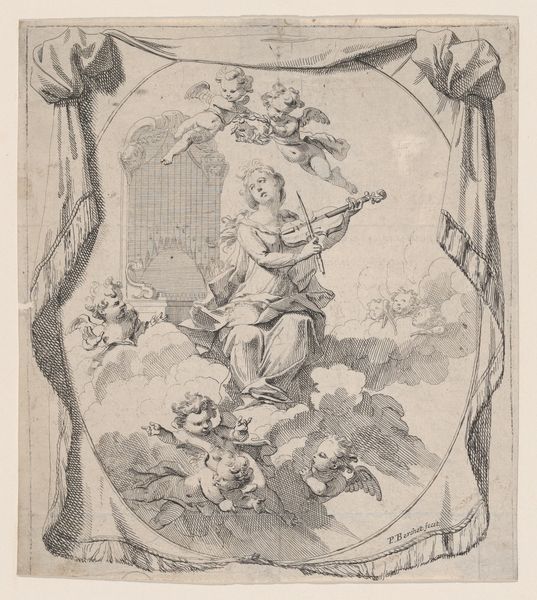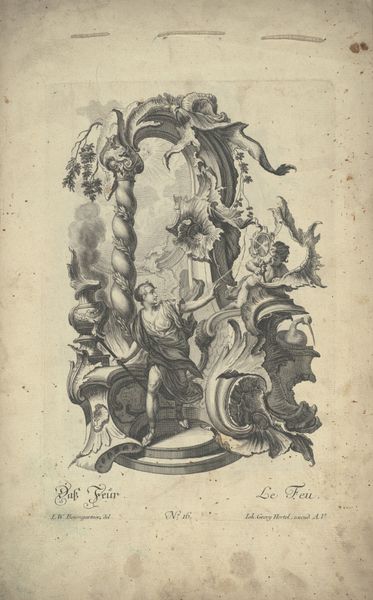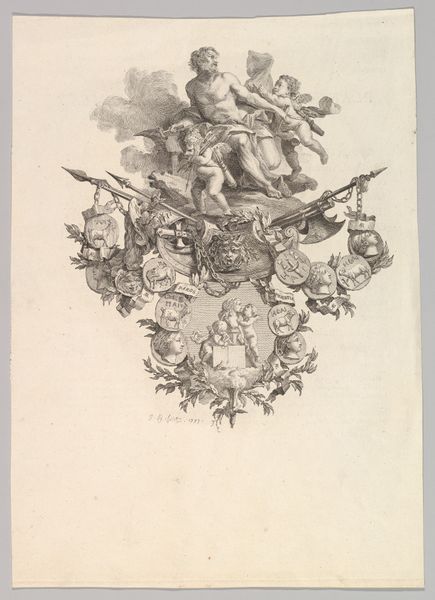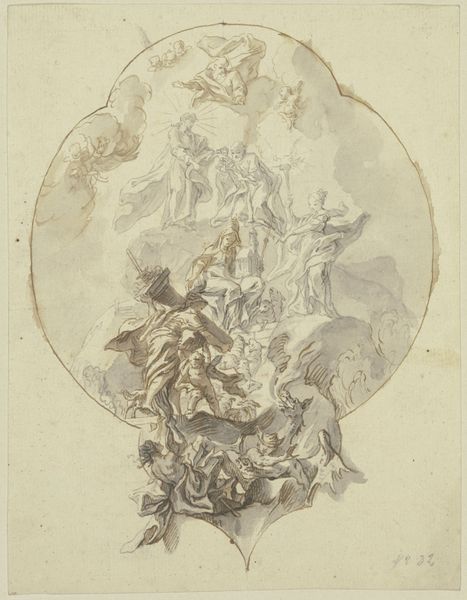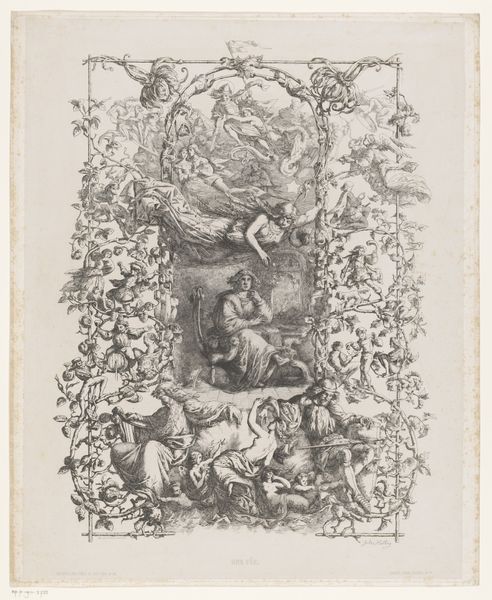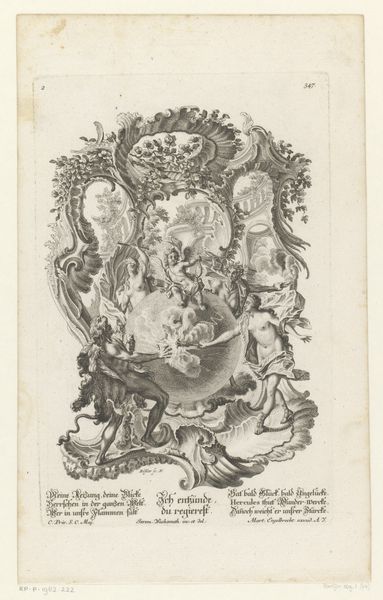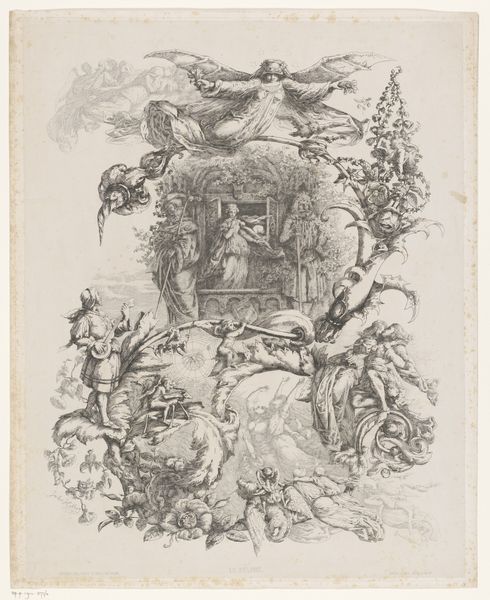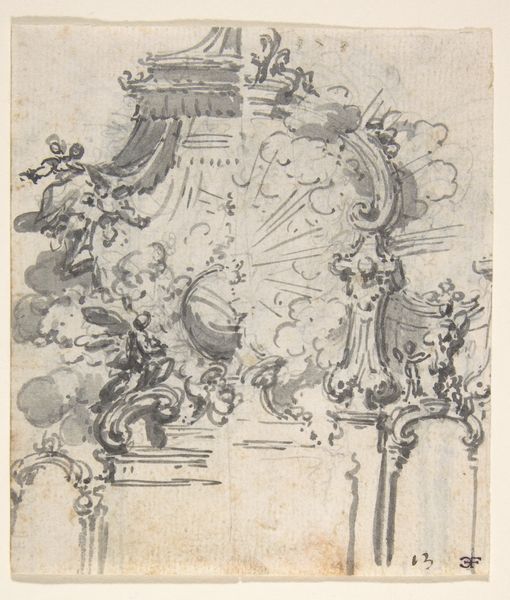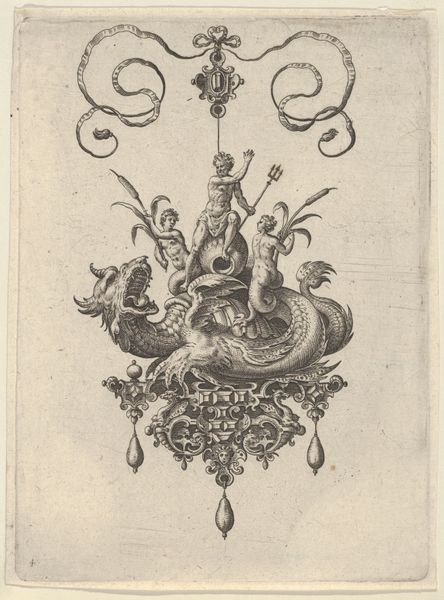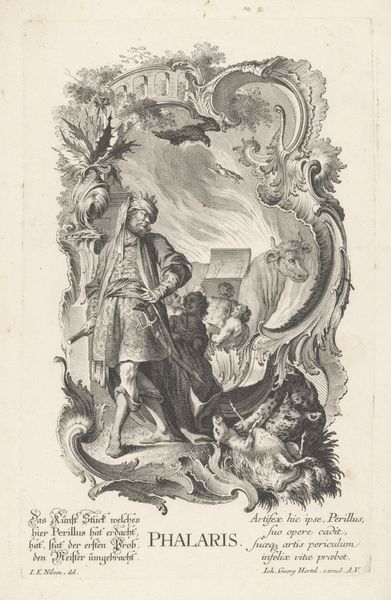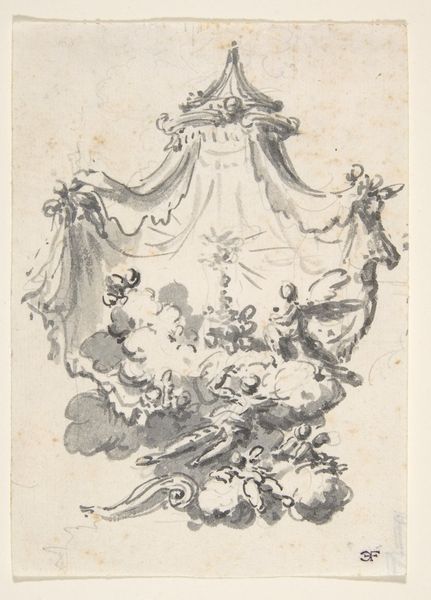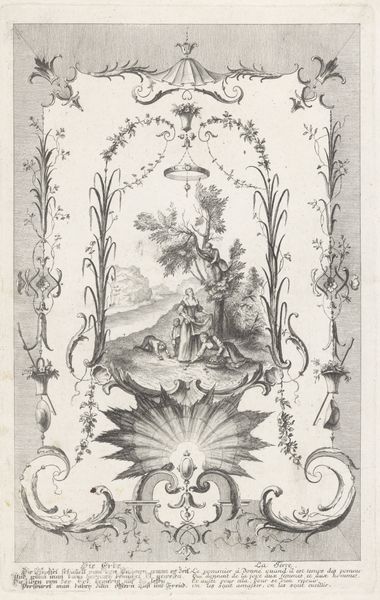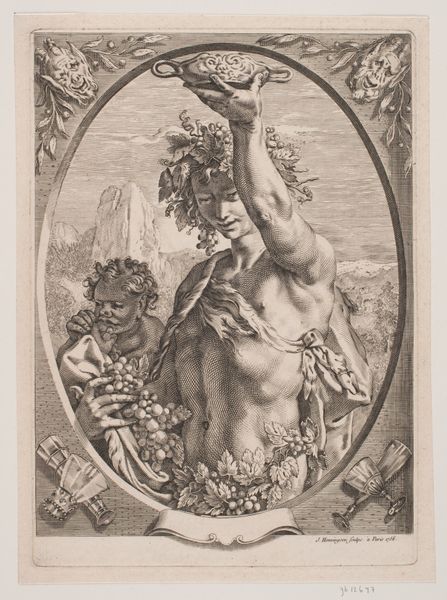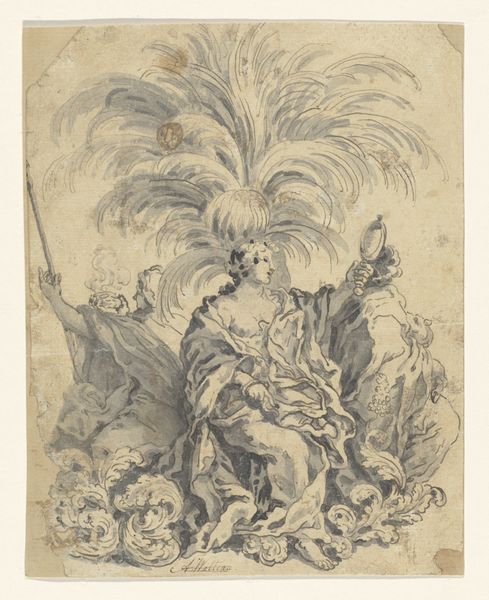
Design for a Monument to a Military Leader 1690 - 1740
0:00
0:00
drawing, print, ink
#
portrait
#
drawing
#
ink painting
# print
#
ink
#
watercolour illustration
#
history-painting
Dimensions: 13 3/4 x 8 13/16 in. (34.9 x 22.4 cm)
Copyright: Public Domain
Editor: We’re looking at Gilles-Marie Oppenord’s "Design for a Monument to a Military Leader," dating from around 1690 to 1740, created using ink. It's a fairly detailed drawing. I’m immediately struck by its hierarchical composition, with the military leader placed centrally, and an angel above. What's your take on this work? Curator: This drawing speaks volumes about the construction of power and memory in the 18th century. It isn't simply a portrait, but a carefully crafted image meant to solidify and legitimize a certain kind of masculine, militaristic authority. The angel isn't just decoration; she's an allegorical figure, lending divine sanction to military endeavors. The question, though, is: whose stories are amplified through these grand monuments, and whose are silenced? Editor: That's an interesting point about who gets remembered. So, is this drawing a reflection of the power dynamics of that time, even today? Curator: Absolutely. Consider the visual language: the portrait elevated, surrounded by symbols of war, and crowned by an angel. It's propaganda, in a way – an attempt to create a specific narrative around leadership and valor. We must unpack the ideologies embedded in these celebratory gestures. How do we, as a society, contend with this glorification, especially when considering the historical context of conflict, colonialism and maybe oppression linked to that particular military figure? Editor: So, understanding the power dynamics can make me think about art in a different way. This drawing made me consider historical and present-day perspectives more deeply. Curator: Precisely. Analyzing these designs offers insights into the narratives that societies choose to perpetuate, and perhaps, the narratives that should be critically examined or challenged in light of our contemporary understanding of social justice.
Comments
No comments
Be the first to comment and join the conversation on the ultimate creative platform.
